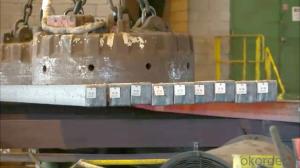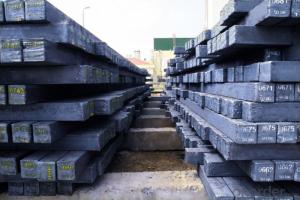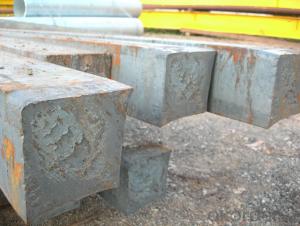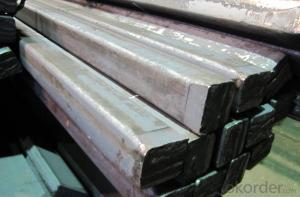Q235/3SP 135MM Blast Furnace Hot Rolled Steel Billet
- Loading Port:
- Tianjin
- Payment Terms:
- TT OR LC
- Min Order Qty:
- 2000 m.t.
- Supply Capability:
- 30000 m.t./month
OKorder Service Pledge
OKorder Financial Service
You Might Also Like
Description of Q235/3SP 135MM Blast Furnace Hot Rolled Steel Billet
Our hot dip galvanised steels consist of a steel substrate with a metallic zinc coating applied by means of a continuous hot dip galvanising process. Metallic zinc coatings are available in steel grades ranging from steel for bending and deep drawing applications, to structural steels and high yield strength steels.
A glossy surface finish obtained under specific skin-pass conditions (either non-skin-passed or skin- passed with smooth cylinders to obtain low roughness) can be provided if required at time of enquiry.
Advantage of Q235/3SP 135MM Blast Furnace Hot Rolled Steel Billet
Uncoated CR steel sheet With the features of in line with the international highest standards in demension and shape, excellent surface finish and properties, the products are mainly used in home appliance and automobile industries.
Galvanized steel sheet(include HDG and EG)
With the features of good corrosion resistance, the products are mainly used in automobile, home appliance, electronics, building and machinery manufacture industries, etc.
Precoated steel sheet With the features of enviromental protection and good processablility, long lasting surface durability, rich in colors, the products are maily used in building, home appliance and furniture industries, etc.
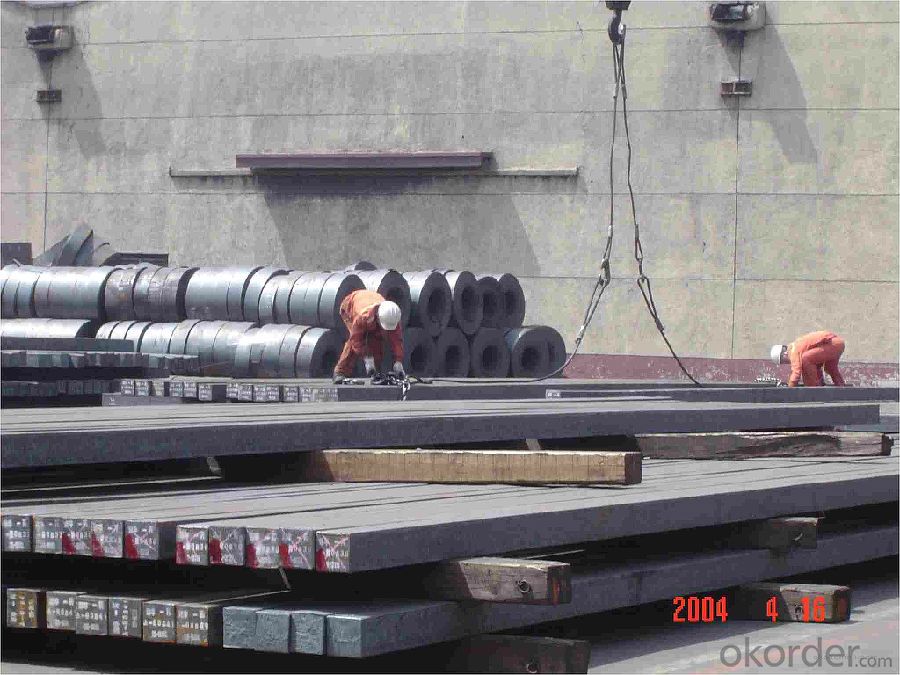
Applications of Q235/3SP 135MM Blast Furnace Hot Rolled Steel Billet
Our hot dip galvanised steels can be used in a very wide range of applications for industrial markets, both indoors and outdoors. Some of the most common applications are:
Building: wide sections for roofing and cladding, doors, door frames, metallic ceilings, partitions, structural members etc
Domestic appliances: all appliances for this sector (both white and brown goods) are manufactured with hot dip galvanised steels
Miscellaneous: electrical cabinets, aeraulic components, air conditioners, road signs etc
Zinc hot dip galvanised steel is suitable for contact with foodstuffs under certain conditions, as specified in European directive 89/109/EEC and French standard NF A 36-712-1. Please contact us for further information on this subject.
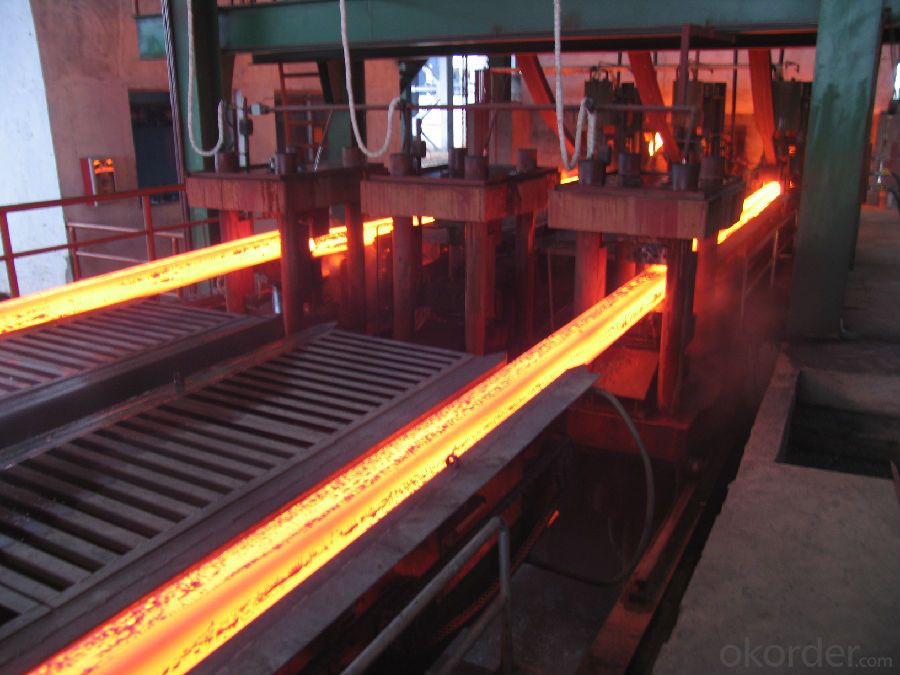
Specifications of Q235/3SP 135MM Blast Furnace Hot Rolled Steel Billet
Quality | Q/BQB 440-2003 | JIS G3312-1994 JIS G3321 | EN 10326-2004 | ASTM A653-02a |
EN 10327-2004 | (BASE PLATE) | |||
(BASE PLATE) | ||||
Commercial Steel | DC51D | SGCC SGLCC | DX51D+Z DX51D+AZ | CS Type A/B/C |
Forming Steel | St01,St02,St03 | SGCD1 SGLCD1 | FS Type A, Type B | |
Drawing | DC52D /DC53D | - | DX52D+Z DX52D+AZ | DDS TYPE A/C |
Steel | DX53D+Z DX53D+AZ | |||
Structural | S280GD (StE28) | SGC400 SGLC400 | S280D+Z DX54D+AZ | SS275 |
Steel | S350GD (StE34) | SGC440 SGLC440 | S350D+Z S350D+AZ | SS340 Class1 |
FAQ of Q235/3SP 85MM Blast Furnace Hot Rolled Steel Billet
We have organized several common questions for our clients,may help you sincerely:
1. How Can I Visit There?
Our company is located in Tianjin City, China, near Beijing. You can fly to Tianjin Airport Directly. All our clients, from home or aboard, are warmly welcome to visit us!
2. How Can I Get Some Sample?
We are honored to offer you sample.
3. Why choose CNBM?
Our delivery time about 15-20days for standard sizes, if you have other requirements like hardness, quanity and width ,it is about 20-40days. But don't worry we also try our best for the delivery time ,because time longer and our cost is higher.
- Q:What are the different types of steel billet packaging materials?
- There are various types of steel billet packaging materials available in the market, each with its own unique characteristics and benefits. Some of the commonly used packaging materials for steel billets include: 1. Wooden Crates: Wooden crates are a popular choice for packaging steel billets due to their strength and durability. They provide excellent protection against external impacts and are suitable for long-distance transportation. 2. Steel Strapping: Steel strapping is a strong and secure packaging material that is often used to bundle steel billets together. It provides high tensile strength and resistance to breakage, ensuring that the billets remain intact during handling and transportation. 3. Plastic Wrapping: Plastic wrapping is a cost-effective and lightweight packaging option for steel billets. It offers protection against moisture and dust, preventing any potential damage to the billets. Plastic wrapping can be easily applied and removed, making it a convenient choice for packaging. 4. Steel Framing: Steel framing is a heavy-duty packaging material used for larger and heavier steel billets. It provides maximum protection and stability during transportation, minimizing the risk of any deformation or damage to the billets. 5. Cardboard Boxes: Cardboard boxes are commonly used for smaller steel billets. They are lightweight, easy to handle, and offer sufficient protection against minor impacts and scratches. Cardboard boxes can be customized in various sizes and shapes to accommodate different billet dimensions. 6. Stretch Film: Stretch film is a flexible packaging material that is commonly used to wrap steel billets. It offers excellent protection against moisture, dust, and scratches. Stretch film also provides some level of stability to the billets, preventing any movement during transportation. It is important to consider the specific requirements of the steel billets, such as size, weight, and transportation conditions, when choosing the appropriate packaging material.
- Q:What are the different surface treatments for improved surface hardness in steel billets?
- There are several different surface treatments that can be used to improve the surface hardness of steel billets. These treatments are designed to enhance the wear resistance and durability of the steel, making it suitable for various industrial applications. One common surface treatment method is through carburizing. Carburizing involves introducing carbon into the surface of the steel billet by heating it in a carbon-rich atmosphere, such as methane or propane. This process forms a hard layer of high-carbon steel on the surface, known as a case, which significantly increases the surface hardness of the billet. Another surface treatment technique is nitriding. Nitriding is a process that involves exposing the steel billet to a nitrogen-rich atmosphere at elevated temperatures. This causes nitrogen atoms to diffuse into the surface of the steel, forming a hard nitride layer. Nitriding not only improves surface hardness but also enhances the resistance to wear and corrosion. A third surface treatment method is induction hardening. Induction hardening utilizes the principle of electromagnetic induction to heat the surface of the steel billet rapidly. Once the desired temperature is reached, the billet is quenched, resulting in a hardened surface layer. This treatment is particularly effective for localized hardening of specific areas on the steel billet. Additionally, shot peening is another surface treatment technique used to improve surface hardness. Shot peening involves bombarding the surface of the steel billet with small, high-velocity steel shots. This process induces compressive stresses in the surface layer, thereby increasing the hardness and fatigue resistance of the billet. Each of these surface treatments has its advantages and disadvantages, and the choice of treatment method depends on the specific requirements and intended use of the steel billets. By selecting an appropriate surface treatment, manufacturers can ensure that steel billets possess the necessary hardness and durability for their intended applications.
- Q:What are the specifications for tool steel billets used in the automotive industry?
- Tool steel billets used in the automotive industry must meet specific criteria to ensure their suitability for various applications. These criteria are essential to guarantee the desired performance and durability of the tool steel in automotive manufacturing processes. One crucial criterion for tool steel billets used in the automotive industry is their chemical composition. The tool steel needs to have a precise composition of elements like carbon, chromium, vanadium, and molybdenum, among others. These elements contribute to the steel's hardness, wear resistance, and toughness, which are vital properties for automotive tooling. Furthermore, the tool steel billets must fall within a specific range of hardness. Hardness can be measured using scales such as Rockwell or Brinell, and the desired level of hardness depends on the intended application. Tools that require high wear resistance generally prefer higher hardness, while tools that require toughness and impact resistance may tolerate lower hardness. Additionally, the tool steel billets used in the automotive industry must display excellent dimensional stability. This means that the steel should undergo minimal dimensional changes during heat treatment and manufacturing processes, ensuring that the tools maintain their shape and accuracy over time. Another important criterion is the machinability of the tool steel. It should be easy to machine and shape into the desired tooling components without excessive tool wear or difficulty. Good machinability allows for efficient production and reduces costs associated with tooling. Moreover, the tool steel billets used in the automotive industry should exhibit good thermal conductivity. This property enables the effective dissipation of heat generated during manufacturing processes like forging or heat treatment. Good thermal conductivity helps prevent localized overheating and ensures uniform heat distribution throughout the tool, resulting in consistent performance. Lastly, the tool steel billets should be free from defects and impurities that could compromise the integrity and performance of the tool steel. These defects include cracks, voids, inclusions, or any other imperfections. Typically, quality control measures such as non-destructive testing are implemented to ensure that the billets meet the required standards. In conclusion, the specifications for tool steel billets used in the automotive industry encompass factors such as chemical composition, hardness, dimensional stability, machinability, thermal conductivity, and overall quality. These specifications guarantee that the tool steel meets the specific requirements of automotive tooling applications, providing durability, performance, and reliability in automotive manufacturing processes.
- Q:How are steel billets manipulated during the manufacturing process?
- Steel billets are manipulated in various ways during the manufacturing process to transform them into usable steel products. The manipulation techniques include heating, rolling, forging, and cutting. Firstly, the steel billets are heated in a furnace to a specific temperature, known as a rolling temperature. This heating process is crucial as it improves the billet's malleability and reduces its brittleness, making it easier to manipulate. Once heated, the billets are passed through a series of rolling mills. These mills apply pressure to the billets, which elongates and shapes them into the desired form. Rolling can be done using hot or cold methods, depending on the end product requirements. Hot rolling is typically used for large-scale production, while cold rolling is more commonly employed for precision applications. Another method of manipulating steel billets is forging. Forging involves applying compressive forces to the billets using hammers or presses. This process enhances the billet's strength, improves its grain structure, and refines its mechanical properties. Forged steel billets are often used in applications where high strength and resistance to impact and fatigue are required, such as in the automotive and aerospace industries. Cutting is also an essential manipulation technique during the manufacturing process. Steel billets are cut into desired lengths using saws or shears. This step ensures that the billets are converted into manageable sizes suitable for further processing or to meet specific customer requirements. In conclusion, steel billets undergo several manipulation techniques during the manufacturing process. These include heating, rolling, forging, and cutting. Each method contributes to transforming the raw billets into the desired shape and properties, ensuring they are suitable for various applications in industries such as construction, manufacturing, and transportation.
- Q:How are steel billets used in the production of axles?
- Steel billets are a crucial component in the production of axles. They are used as the raw material from which axles are manufactured. To begin the production process, steel billets are first heated to a specific temperature to make them more malleable. This heating process is known as forging or hot rolling. It allows the billets to be shaped and manipulated into the desired axle form. Once the billets have reached the appropriate temperature, they are placed in a forging press or a rolling mill. In the forging process, the billets are subjected to high pressure, which shapes them into the desired axle shape. This process can involve various steps, such as hammering, pressing, or extrusion, to achieve the desired shape and dimensions. After the forging process, the axle is usually heat treated to enhance its strength and durability. This involves heating the axle to a specific temperature and then rapidly cooling it, a process known as quenching. The heat treatment helps to improve the axle's hardness and resistance to wear and tear. Once the axles have been forged and heat treated, they may undergo additional processes such as machining, grinding, or finishing to achieve the required surface finish and dimensional accuracy. This ensures that the axles meet the necessary specifications and can be seamlessly integrated into the final product. In summary, steel billets play a vital role in the production of axles. They serve as the starting point for the manufacturing process, where they are heated, forged, and shaped into the desired axle form. The resulting axles are then heat treated and undergo additional processes to meet the required specifications. Steel billets are essential for producing high-quality and durable axles, which are crucial components in various industries, including automotive, railway, and heavy machinery.
- Q:How are steel billets inspected for internal and surface defects?
- To ensure the quality and integrity of steel billets, various methods are employed to inspect them for internal and surface defects. One commonly used technique for detecting internal flaws is ultrasonic testing. This involves transmitting high-frequency sound waves through the billet and analyzing the reflections received to identify any discontinuities or defects such as cracks, voids, or inclusions. Another method used to inspect internal defects is magnetic particle inspection. This process entails applying a magnetic field to the billet and coating it with iron particles. If there are any internal defects or cracks, they will disrupt the magnetic field, causing the iron particles to accumulate at these locations and become visible under appropriate lighting conditions. When it comes to surface defects, visual inspection is typically the initial step. Expert inspectors visually examine the billet for any visible irregularities like cracks, pits, scratches, or deformities. They may also utilize specialized tools like magnifying glasses or microscopes to ensure a thorough examination. In addition to visual inspection, non-destructive testing techniques can also be employed to detect surface defects. One commonly used method is dye penetrant testing. In this procedure, a colored liquid dye is applied to the surface of the billet. The dye seeps into any surface defects and is later removed, leaving behind a visible indication of the defect. This technique is particularly effective in detecting surface cracks or discontinuities. Another technique used for surface defect inspection is eddy current testing. This technique is based on the principle that a fluctuating magnetic field induces electrical currents in conductive materials like steel. Any surface defects or irregularities will disrupt the induced currents, which can be detected by monitoring changes in the electrical properties of the billet. Eddy current testing is commonly employed to identify surface cracks, pits, or variations in thickness. In conclusion, a combination of these inspection methods allows for a comprehensive evaluation of steel billets, ensuring that both internal and surface defects are identified and addressed before the billets undergo further processing or are used in various applications.
- Q:What are the weight ranges of steel billets?
- The weight ranges of steel billets can vary depending on the specific requirements and industry standards. However, commonly used weight ranges for steel billets are typically between 1,000 kilograms (2,204 pounds) to 5,000 kilograms (11,023 pounds).
- Q:How do steel billets contribute to the overall weight reduction of a structure?
- Steel billets contribute to the overall weight reduction of a structure by being a lightweight and high-strength material. They allow for the design of thinner and more efficient structural elements, reducing the amount of steel required, and consequently the weight of the structure.
- Q:How do steel billets contribute to the food processing industry?
- Steel billets contribute to the food processing industry in several ways. Firstly, steel billets are used to manufacture various machinery and equipment used in the food processing industry. For example, they are used to create conveyor belts, mixers, crushers, and packaging machines, among others. These machines play a crucial role in the processing, handling, and packaging of food products. Steel billets are also used to produce storage tanks and containers, which are essential for the safe and hygienic storage of food ingredients and finished products. These tanks are usually made of stainless steel, which is corrosion-resistant, durable, and easy to clean, ensuring that the food remains uncontaminated and of high quality. Furthermore, steel billets contribute to the construction of infrastructure in the food processing industry. They are used to build food processing plants, warehouses, and cold storage facilities. These structures provide the necessary environment for food processing, such as temperature control and proper ventilation, ensuring food safety and preservation. Additionally, steel billets are crucial for the transportation of food products. They are used to manufacture shipping containers, refrigerated trucks, and railway cars, which enable the efficient and safe transportation of food from one location to another. The strength and durability of steel ensure that the food products are protected during transit, preventing spoilage and contamination. Overall, steel billets are essential in the food processing industry as they contribute to the manufacturing of machinery, storage containers, infrastructure, and transportation systems. Their properties of strength, durability, and corrosion resistance make them ideal for ensuring food safety, quality, and efficiency in all stages of food processing.
- Q:What are the main differences between hot-rolled and cold-rolled steel billets?
- The main differences between hot-rolled and cold-rolled steel billets lie in the manufacturing process and the resulting characteristics of the steel. Hot-rolled steel billets are produced by heating the steel above its recrystallization temperature, typically around 1200°C (2200°F), and then rolling it into the desired shape or size. This process involves the use of large-scale machinery, such as rolling mills, which apply significant pressure to shape the steel. As a result, hot-rolled steel billets have a characteristic rough and scaled surface. On the other hand, cold-rolled steel billets are produced by further processing the hot-rolled steel. The hot-rolled steel is first cooled down to room temperature and then passed through a series of rollers at lower temperatures, typically below 1000°C (1832°F). This process provides more precise control over the dimensions and surface finish of the steel. Cold-rolled steel billets have a smoother and more polished appearance compared to their hot-rolled counterparts. In terms of physical and mechanical properties, hot-rolled steel billets tend to have a higher yield strength and lower ductility compared to cold-rolled steel. This is because the hot-rolling process causes the steel to undergo strain hardening, resulting in increased strength but reduced ability to deform without breaking. Cold-rolled steel, on the other hand, retains more of its ductility due to the controlled process of rolling at lower temperatures. Another significant difference is in the dimensional accuracy of the two types of steel billets. Hot-rolled steel billets are known to have larger dimensional tolerances, which means that there can be variations in the thickness, width, and length of the billets. In contrast, cold-rolled steel billets have tighter dimensional tolerances, resulting in more precise and consistent dimensions. In summary, the main differences between hot-rolled and cold-rolled steel billets lie in the manufacturing process, surface finish, physical and mechanical properties, and dimensional accuracy. Understanding these differences is crucial for selecting the appropriate type of steel billets for specific applications, as each type has its own advantages and disadvantages.
1. Manufacturer Overview |
|
|---|---|
| Location | |
| Year Established | |
| Annual Output Value | |
| Main Markets | |
| Company Certifications | |
2. Manufacturer Certificates |
|
|---|---|
| a) Certification Name | |
| Range | |
| Reference | |
| Validity Period | |
3. Manufacturer Capability |
|
|---|---|
| a)Trade Capacity | |
| Nearest Port | |
| Export Percentage | |
| No.of Employees in Trade Department | |
| Language Spoken: | |
| b)Factory Information | |
| Factory Size: | |
| No. of Production Lines | |
| Contract Manufacturing | |
| Product Price Range | |
Send your message to us
Q235/3SP 135MM Blast Furnace Hot Rolled Steel Billet
- Loading Port:
- Tianjin
- Payment Terms:
- TT OR LC
- Min Order Qty:
- 2000 m.t.
- Supply Capability:
- 30000 m.t./month
OKorder Service Pledge
OKorder Financial Service
Similar products
New products
Hot products
Hot Searches
Related keywords
